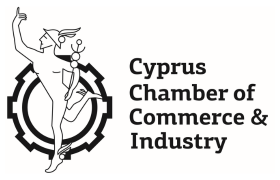The development means BoC now has access to cheaper refinancing. Following a meeting of the ECB’s Governing Council yesterday, it released a statement welcoming the Cypriot authorities’ decision to conclude the resolution of Cyprus’ largest lender. “The finalisation of this process is a major step toward restoring confidence in the domestic banking system,” it said. Shortly after, the BoC announced that it has been “reinstated as an eligible counterparty by the European Central Bank for monetary policy operations. The reinstatement follows the bank’s recapitalization through a bail-in of depositors (a deposit-to-equity conversion) and the bank’s exit from resolution.”
The restoring of counterparty status, the bank said, together with the approval in early July for the use of bonds issued or guaranteed by the Republic of Cyprus, “will result in a reduction in funding from Emergency Liquidity Assistance (ELA), as the bank will have access to direct funding from the ECB for monetary policy operations. “Furthermore,” the statement added, “ECB funding will be under improved terms, given that the rate for main refinancing operations stands at 0.5 per cent.” Cyprus sovereign bonds had not been accepted as collateral in the ECB’s regular refinancing operations since June 2012, which left the country’s banks short of ECB-eligible collateral. Use of ELA by Cypriot banks spiked thereafter when the ECB discontinued admitting the country’s sovereign bonds as collateral in regular ECB liquidity operations, due to their low credit ratings. By the time Cyprus was bailed out in March of this year, Laiki had amassed a little over €9bn and BoC some €2bn more. The European Central Bank had set Cyprus a March 25 deadline to agree a bailout plan, threatening to turn off the ELA tap for Cypriot banks unless a bailout programme were agreed by then with the EU and the IMF.
ELA is effectively emergency loans given by eurozone national central banks to cash-strapped commercial banks. The loans are given at the discretion of the national central bank although they have to be approved by the ECB. The ECB defines ELA as support given by central banks in “exceptional circumstances and on a case-by-case basis to temporarily illiquid institutions and markets.” National central banks may provide ELA “against adequate collateral” and only to “illiquid but solvent” credit institutions. Governments are ultimately responsible for any losses from ELA given by their central banks, as they underwrite them. The collateral banks put up to secure ELA financing is typically of a lower average quality than is accepted by the ECB.
Earlier this week BoC exited administration after authorities here agreed with international lenders a final ‘haircut’ on uninsured deposits to recapitalise the bank to a level over and above that stipulated by compulsory capital adequacy regulations. The ‘haircut’ or deposit-for-equity swap was set at 47.5 per cent, 10 per cent more than that already levied on large deposits (€100,000 and over). The bank is currently in the process of converting this additional 10 per cent into shares. Depositors subjected to the haircut or ‘bail-in’ will become the bank’s new shareholders, set to elect a new board at an AGM in September.
Source: Cyprus Mail













